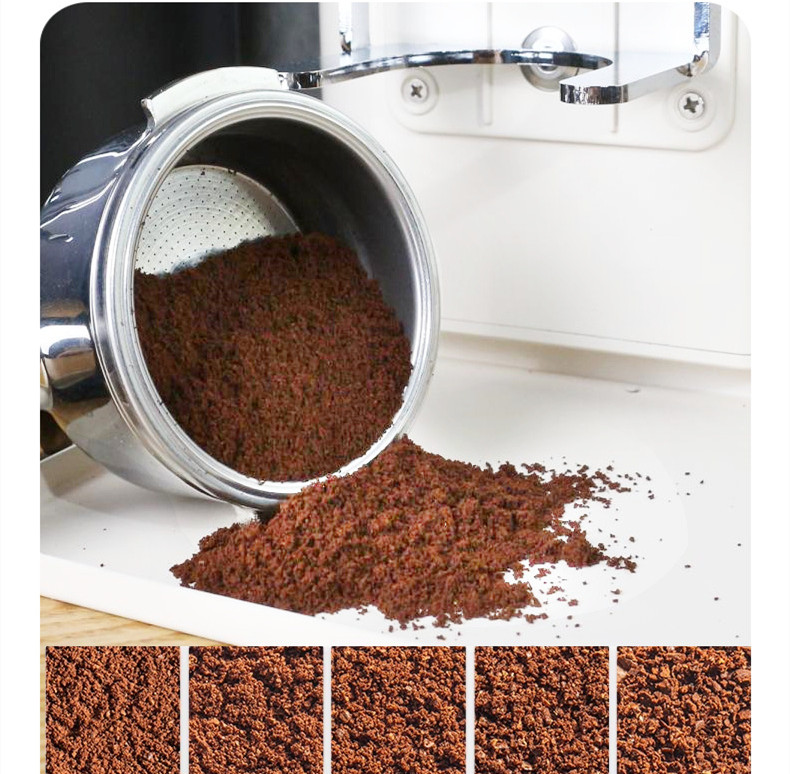Hot air circulation is a core factor affecting flavor consistency, efficiency and energy consumption in commercial coffee roasting. The following systematically expounds the methods to enhance the baking effect from three dimensions: optimization of hot air dynamics, improvement of equipment structure, and intelligent regulation of parameters
First, hot air dynamics optimization: Precise control of air flow paths
Air duct design and pressure balance
Annular vortex suppression: In traditional roasters, hot air is prone to form vortices at the rear end of the drum, leading to local overheating. By adding a deflector plate at the rear end of the drum, the hot air is guided to the front end, forming a “spiral” circulation, which can reduce the temperature gradient difference.
Pressure gradient control: Install pressure sensors at the air inlet and outlet to monitor the wind pressure difference in real time. If the exhaust pressure is too high, the opening degree of the air damper or the speed of the fan should be adjusted to prevent hot air from escaping too quickly and causing heat waste.
Case: After adding a deflector plate to a certain baking machine, the temperature difference inside the drum was reduced from ±8℃ to ±3℃.
The wind speed works in harmony with the tumbling of the beans
Critical wind speed calculation: The hot air wind speed should be matched with the particle size of the coffee beans and the rotational speed of the drum. If the wind speed is too low, the bean bodies cannot be fully suspended. If the wind speed is too high, the beans will hit the drum wall, resulting in broken beans.
Dynamic wind speed regulation: Accelerate water evaporation during the dehydration period (high wind speed, such as 5-6m/s), and promote the transformation of flavor substances during the development period (low wind speed, such as 3-4m/s).
Analogy: Similar to a hair dryer drying hair, a high wind speed at the beginning quickly removes moisture, and a low wind speed later to avoid damaging the hair quality.
Second, equipment structure improvement: Enhance heat exchange efficiency
Roller material and surface treatment
Thermal conductivity optimization: Select stainless steel materials with good thermal conductivity (such as SUS304), and add micro-pore structures to the inner wall of the drum to expand the heat exchange area.
Anti-stick coating application: Apply Teflon or ceramic coating to reduce the adhesion of coffee beans to the drum wall and lower thermal resistance.
Experimental data: The heat exchange efficiency of the micro-porous structure drum is 20% higher than that of the smooth drum.
Multi-zone heating system
Zonal temperature control technology: Heating tubes are respectively arranged at the front end, middle end and rear end of the drum to achieve independent temperature control. For instance, the high temperature at the front end (220℃) enables rapid dehydration, while the low temperature at the back end (180℃) extends the development period.
Hot air recirculation: The discharged hot air, after dust removal and dehumidification, is re-injected into the drum to reduce heat loss.
Energy-saving effect: The hot air recirculation system can reduce energy consumption by 15% to 20%.
Third, intelligent parameter regulation: Data-driven closed-loop optimization
Sensor networks and real-time monitoring
Multi-point temperature collection: Thermocouples are installed on the inner wall of the drum, the air outlet and the surface of the coffee beans to monitor the temperature distribution in real time.
Gas composition analysis: The concentrations of CO₂ and volatile organic compounds (VOCs) in the exhaust air are detected by an infrared spectrometer to determine the baking process.
Application scenario: When the peak concentration of CO₂ occurs, the first-explosion stage reminder is automatically triggered.
AI Algorithms and Adaptive Control
Baking curve learning: Train neural network models based on historical data to predict the optimal hot air parameters under different bean varieties and loading amounts.
Abnormal working condition compensation: When the temperature fluctuation is detected to exceed the threshold, the fan speed and heating power are automatically adjusted to prevent baking failure.
Case: After a certain baking machine introduced AI control, the consistency of flavor between batches improved by 40%.
Fourth, Operational practice and Maintenance points
The damper and the rotational speed are regulated in coordination
Damper opening strategy: In the initial stage, fully open the damper (80%-100%) for rapid dehumidification. During the development stage, close the damper slightly (50%-60%) to retain heat.
Speed compensation mechanism: When the wind speed decreases, appropriately increase the drum speed (such as +5 revolutions per minute) to maintain the suspension state of the bean body.
Regular cleaning and calibration
Air duct cleaning: Clean the silver scale and dust inside the air duct every month to prevent blockage and reduce the wind speed.
Sensor calibration: Calibrate the temperature and pressure sensors every quarter to ensure data accuracy.
Risk Warning: Uncleaned air ducts may cause a 30% drop in wind speed, leading to uneven baking.
Summary
The optimization of hot air circulation requires coordinated efforts from three aspects: air flow path design, equipment structure improvement, and intelligent parameter regulation. By means of technical measures such as suppressing vortices, zonal temperature control, and AI adaptive control, the consistency of baking can be significantly improved, energy consumption reduced, and precise flavor regulation achieved. It is suggested that baking enterprises establish a closed-loop system of “sensor – algorithm – actuator”, continuously optimize parameters in combination with cupping feedback, and ultimately form a standardized baking process.


